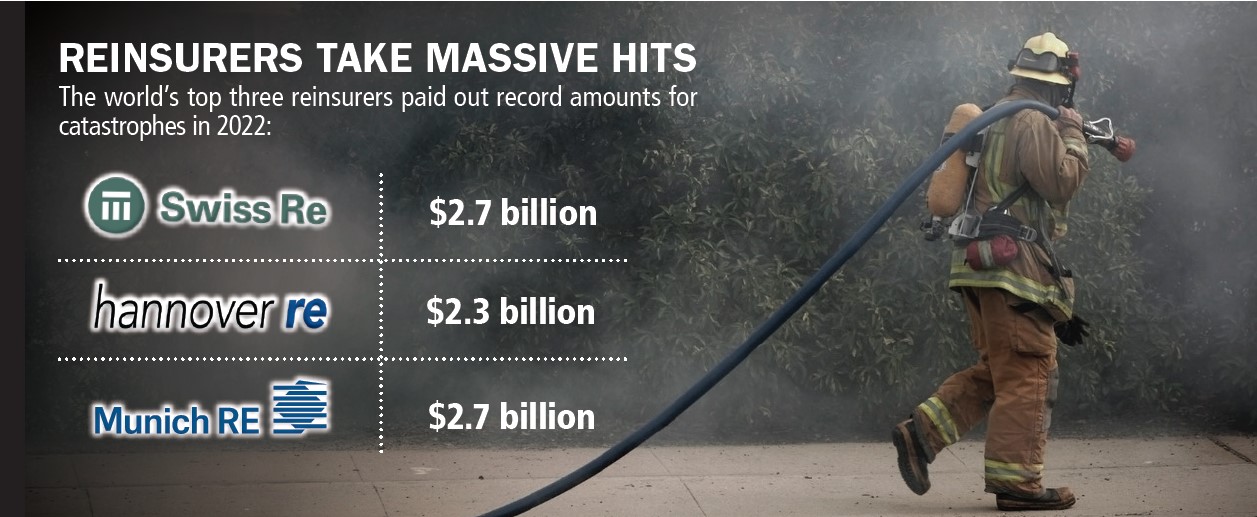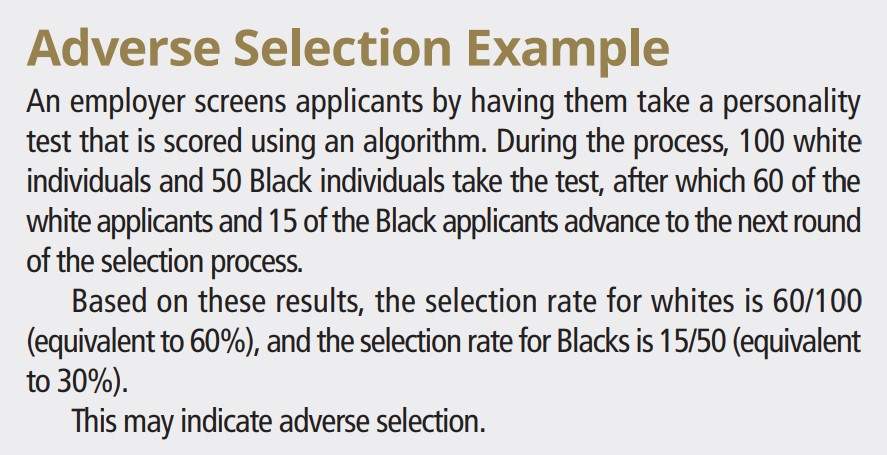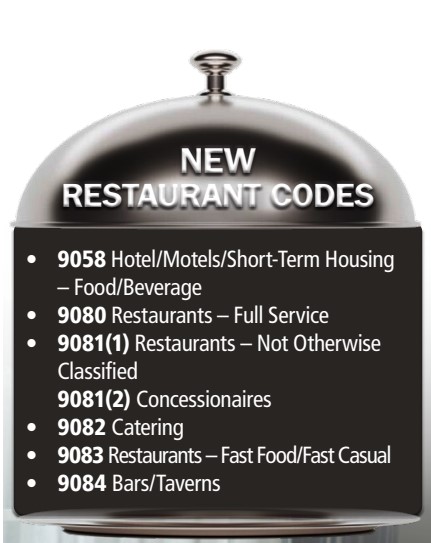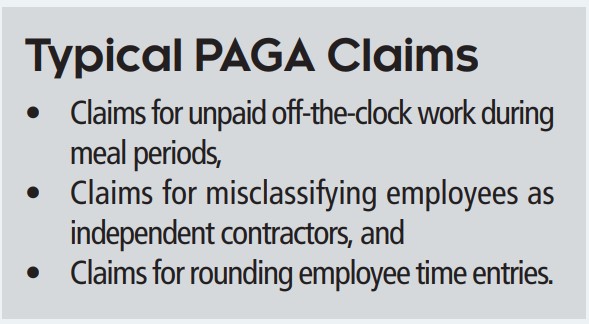October 2023 – Commercial Property Insurance – The Hidden Cost Driver behind Rate Hikes

COMMERCIAL PROPERTY owners throughout California are getting hit with significant insurance rate hikes and non-renewal notices as a confluence of factors reverberate through the market.
The commercial property insurance industry is struggling with years of losses after paying out billions of dollars annually for increasingly costly and numerous wildfire claims in California and other natural disasters around the country.
While massive costs dominate the conversation, there is another factor that is contributing just as much to rising insurer costs: The role of reinsurance.
Reinsurance explained
Just like you mitigate your risks by buying insurance, your insurance company does the same by purchasing reinsurance.
This coverage pays claims when they reach catastrophic levels or a certain threshold, like those from massive wildfires.
These arrangements call for the reinsurer to cover the cost of claims for a certain region or for a certain risk, like wildfires or hurricanes. Each reinsurance treaty is different and they are often tailor-written for individual insurance companies.
Without reinsurers taking on a good portion of catastrophic claims, insurance rates would be much higher than they are today. But that’s changing.
Reinsurers pay for a significant portion of any global catastrophe as they are the backstop for insurers around the world. And catastrophes have been growing in number and scope all over the planet.
During the first half of 2023, natural catastrophes caused $52 billion in insured damage globally, which is 18% higher than the average of $44 billion in the past 10 years and 39% higher than the 21st-century average of $38 billion, according to a report by Swiss Re.
The U.S. accounted for $34 billion of the world’s insured property losses in the first half. The nation also accounted for 13 of the 17 global natural catastrophe events that each caused more than $1 billion in insured losses, according to the report.
What reinsurers are doing
Raising rates – Reinsurance companies have been raising their rates significantly. A recent report on the trade news site Artemis.com said property catastrophe reinsurance rates had
seen a substantial average increase of approximately 30% during July 1 renewals.
Reconsidering where they provide coverage – Reinsurers have also started pulling back from covering properties in areas or regions that are at higher risk for natural disasters, particularly California and Florida, the latter due to increasingly costly hurricane damage and the former due to the increasing wildfire risk.
When reinsurers pull back, the primary insurers often have to take on more of the risk themselves.
Changing terms – Reinsurers are taking on less risk than they have in the past by raising attachment points, forcing primary insurers to take on more of the cost of claims.
Reinsurers are changing conditions for paying claims, getting more stringent in their definitions of various catastrophic events and triggers for paying claims.
The takeaway
While this hard reinsurance market continues, there is hope that rates will stabilize in the future bringing relief to insurers, and more importantly: You.
Both reinsurers and insurers are struggling to catch up with increasing costs and the “new normal.” Once they adapt, your premium may be more predictable.

July 2023 – Cal/OSHA Rule-Making – Indoor Heat Illness Prevention Standard on Tap

Cal OSHA has proposed its long-awaited indoor heat illness prevention standard as increasingly hot summers are affecting workers in indoor spaces like warehouses, production operations,
restaurants and more.
The proposed standard, largely based on the state agency’s outdoor regulations, will require employers whose workplaces at times are at least 82 degrees to have a written Indoor Heat Illness Prevention Plan.
The standard, once it takes effect, will affect employers throughout the state and many will have to take steps and invest in equipment and planning to ensure compliance. The preventative measure to which most employers will likely resort is air-conditioning.
The Standards Board wrote in its proposal, according to the Cal-OSHA Reporter trade publication: “There is likely to be a particular need to reduce temperatures in large warehouses, manufacturing and production facilities, greenhouses, and wholesale and retail distribution centers.”
Other facilities that would likely also need to install HVAC units include restaurant kitchens and dry cleaners. They may also need to improve air circulation in their operations.
Under the proposal, the following regulations apply to a workplace where the indoor temperature exceeds 82 degrees.
Access to drinking water
Employers are required to provide access to potable water that is fresh, suitably cool, and free of charge.
It must be located as close as practicable to the work area, as well as indoor cool-down areas where employees can rest. If an employer doesn’t provide water continuously, it will be required to provide at least one quart per hour per employee per shift.
Employers should encourage frequent water consumption.
Access to cool-down areas
Employers must provide at least one cool-down area during shifts, and grant a cool-down break to staff who ask for one.
Workers taking cool-down breaks shall be monitored and asked to stay in the area if they are experiencing heat illness symptoms. As long as symptoms persist, they may not be ordered back to the work they were doing.
Control measures
Employers can implement a number of measures to protect their workers:
Engineering controls – This can include barriers between heat sources and employees, isolating hot processes from workers, air-conditioning, cooling fans, mist fans, swamp coolers, ventilation, etc.
Administrative controls – This can include limiting exposure by adjusting work procedures, practices, or schedules (working during cooler periods, using work/rest schedules, or reducing the speed of work).
Personal heat-protective equipment – This could include water- and air-cooled garments, cooling vests, and more.
Emergency response procedures
Employers will need to develop and have in place emergency response procedures that workers and supervisors can follow in case they are experiencing heat illness.
Acclimation steps
Employees should be closely observed during heat waves, and new workers must be closely observed during their first 14 days of work to ensure they are acclimating.
Training
Employees and supervisors will need to be trained on:
- Personal risk factors for heat illness.
- Their employer’s procedures for complying with the regulation.
- The importance of frequent water consumption.
- The importance of acclimation.
- Signs and symptoms of heat illness, and first aid or emergency response procedures.
July 2023 – EEOC Guidance – New Rules for Using AI in Employment Decisions

The Equal Employment Opportunity Commission has issued new guidance on how employers can properly use software, algorithms and artificial intelligence-driven decision-making tools when screening job applicants and selecting candidates.
The EEOC has grown concerned about possible adverse impacts of these technologies that can help employers with a wide range of employment matters, like hiring decisions, recruitment, retention, monitoring performance, and determining pay, promotions, demotions, dismissals and referrals.
The guidance follows the EEOC’s recent announcement that it would pursue enforcement of violations of Title VII of the Civil Rights Act of 1964 and other statutes under its jurisdiction arising from use of AI in employment decisions.

The new guidance includes a series of questions and answers to help employers prevent the use of AI and other technologies from leading to discrimination on the basis of on race, color, religion, sex or national origin, in violation of Title VII.
Main points of the guidance:
Responsibility: Employers are ultimately responsible for discriminatory decisions rendered by algorithmic decisionmaking tools, even if they are administered by another entity,
such as a software vendor.
Assessment: Employers should assess whether their use of technology has an adverse impact on a particular protected group by checking whether use of the procedure causes a selection rate for individuals in the group that is “substantially” less than the selection rate for individuals in another group.

The selection rate for a group of applicants or candidates is calculated by dividing the number of persons hired, promoted or otherwise selected from the group by the total number of candidates in that group.
If an employer is in the process of implementing a selection tool and discovers that using it would have an adverse impact on individuals of a protected class, it can take steps to reduce
the impact or select a different tool, per the guidance.
If an employer fails to adopt a less discriminatory algorithm than that which was considered during the implementation process, it could result in liability, according to the EEOC.
The takeaway
Employers using algorithmic decision-making tools for employment decisions need to take the same care as they do when making employment moves without assistance from technology.
Firms should not implement these technologies without considering possible adverse decision-making that could lead to violations of the law and prompt litigation and regulatory
action by the EEOC.
Experts advise that you move forward carefully and work with the vendor to ensure the technology doesn’t get your organization in trouble.
July 2023 – Class Code Changes Okayed by Insurance Dept

If you have staff who work remotely, you’ll want to pay attention to changes that are coming to the workers’ compensation class code you use for them.
Starting Sept. 1, California’s telecommuter class code will finally get its own pure premium rate, that is lower than what’s currently being charged.
Since many people started working remotely after the COVID-19 pandemic began in 2020, the Workers’ Compensation Insurance Rating Bureau created a new telecommuter class code (8871) and tethered its pure premium advisory rate to the 8810 clerical classification for easier administration.
Now, under the Rating Bureau’s workers’ compensation regulatory filing which was adopted by the California Department of Insurance on May 25, code 8871 will receive its own rate, separate from the clerical rate. In fact, the new telecommuter rate will be 25% lower than the clerical rate due to the former’s lower losses and higher average payroll.
If you have remote workers, you’ll want to ensure they are in the telecommuter class code to enjoy the lower premium.
New X-Mod threshold
The approval of the filing also increases the workers’ comp premium threshold for experience rating (being eligible for an X-Mod) to $10,200 from $9,200 to account for wage inflation.

Restaurant classification split
Other changes include splitting the 9079 restaurant classification into six new codes (see box below), effective Sept. 1, 2024.
While there will be six codes, they will still be combined for rate-making purposes until the Rating Bureau collects a few years of data from the new codes, so that it can set individual rates
for each of them.

January 2023 – Ransomware Fallout – Firms That Pay Ransom Often Hit Again

A new report found that one-third of companies who are hit with ransomware and pay the hackers to unlock their systems, are often likely to be targeted a second time.
And after they pay, they are often faced with significant consequences, including system rebuilding costs, their data still being leaked and financial consequences, according to the “2022 Cyber Readiness Report” by Hiscox. The eye-opening results of the study come as the number of businesses hit by cyber attacks continues growing.
Considering the potential damage to your organization if your systems are compromised in the aftermath of a ransomware attack, even if you have cyber insurance to pay recovery costs, it’s best to take steps to thwart attacks in the first place.
More than ransom
It’s clear that paying a ransom often doesn’t mean the recovery for an affected business will be smooth, according to the report, which covers the poll results of 5,000 organizations.
 The risk
The risk
Nearly half (47%) of firms reported that they had been hit by a cyber attack during the past 12 months, up from 40% in 2021. Of those who were attacked, 17% were ransomware victims.
The median cost of an attack has risen 29% to just under $17,000.
Small firms can no longer expect to fly under the radar as the criminals increasingly have them in their sights.
What you can do
Some firms have little exposure to a cyber attack, particularly if they don’t handle customer data or are not techdriven operations. Each firm has a different exposure level.
For companies that have cyber exposure, protecting their organization requires a multi-pronged approach that includes cyber insurance and strong data security protocols.
Cyber insurance may cover the cost of a paid ransom as well as recovery and rebuilding costs. If your organization has exposure, please give us a call to review your risk and see if cyber insurance is right for your business.
Besides that, Hiscox recommends taking a number of steps to protect against an attack and be able to recover from one faster:
- Keep all of your software up to date to include the installation of all the latest security patches.
- Frequently back up your data on a server that is not hooked up to the cloud.
- Train workers on how to recognize and avoid common social engineering attacks that criminals use to trick them into revealing sensitive information about themselves or their company.
- Teach your staff how to detect potentially dangerous e-mails that try to get them to click on a malicious link that can unleash ransomware or other malware.
January 2023 – Top 10 California Laws, Regs for 2023

A slew of new laws and regulations that will affect California businesses are taking effect for 2023.
Last year was a busy one, with ground-breaking new laws on employee pay disclosures, a law prohibiting discrimination against cannabis-using employees and another expanding the circumstances when employees can take leave to care for a loved one. The following are the top 10 laws and regulations that employers in the Golden State need to stay on top of.
1. Pay disclosure
This sweeping law in part requires more disclosure of pay information by employers. Under current law, employers are required to provide the pay scale for a position upon reasonable request by a job applicant. SB 1162 goes a step further by:
- Requiring employers, upon request by a current employee, to provide the pay scale of the position they are employed in.
- Requiring employers with 15 or more workers to include pay scale in any job postings for open positions.
- Requiring employers to maintain records of job titles and wage rate history for each employee while employed for the company, as well as three years after their employment ceases.
Note: The law defines “pay scale” as the salary or hourly wage range that the employer “reasonably expects” to pay for the position. Penalties range from $100 to $10,000 per violation. This law took effect Jan. 1, 2023.
2. State of emergency and staff
This new law, SB 1044, bars an employer, in the event of a state of emergency or emergency condition, from taking or threatening adverse action against workers who refuse to report to, or leave, a workplace because they feel unsafe. “Emergency condition” is defined as:
- Conditions of disaster or extreme peril to the safety of persons or property caused by natural forces or a criminal act.
- An order to evacuate a workplace, worksite or worker’s home, or the school of a worker’s child due to a natural disaster or a criminal act.
SB 1044 also bars employers from preventing employees from using their mobile phones to seek emergency assistance, assess the safety of the situation or communicate with another person to confirm their safety. The law, which took effect Jan. 1, 2023, does not cover first responders and health care workers.
3. Cannabis use and discrimination
This law bars employers from discriminating in hiring, termination or other conditions of employment based on employees using cannabis while off duty. The bill’s author says the legislation is necessary because THC (tetrahydrocannabinol), the active ingredient in marijuana, can stay in a person’s system after they are no longer impaired. As a result, drug testing may detect THC in an employee’s system even if they used it weeks earlier and it is having no effect on their job performance. AB 2188 does not require employers to permit employees to be high while working. The bill would exempt construction trade employees and would not preempt state or federal laws that require employees to submit to drug testing. This law takes effect Jan. 1, 2024.
4. Leaves of absence
The California Family Rights Act and the state’s paid sick leave law allow employees to take leave to care for a family member, defined as a spouse, registered domestic partner, child, parent, parent-in-law, grandparent, grandchild or sibling. The definition has been expanded to include “any individual related by blood or whose association with the employee is equivalent of a family relationship.”
5. Contractor workers’ comp
Starting July 1, the following contractors must carry workers’ compensation coverage regardless of if they have employees or not:
- Concrete (C-8 license)
- Heating and air conditioning (C-20)
- Asbestos abatement (C-22), and
- Tree service (D-49).
Starting Jan. 1, 2026, all licensed contractors must have coverage.
6. OSHA citation postings
Under current law, employers that receive citations and orders from OSHA are required to post them in or near the place the violation occurred, in order to warn employees about a potential hazard. Starting Jan. 1, 2023, they must post the notice not only in English, but also: Spanish, Chinese (Cantonese, Mandarin), Vietnamese, Tagalog, Korean, Armenian and Punjabi.
7. Permanent COVID standard
Cal/OSHA has a permanent COVID-19 prevention standard that will sunset in 2024. The new standard, which replaces the temporary emergency standard the agency had implemented, should provide more certainty for prevention procedures and practices. Here are the main takeaways:
- Employers are no longer required to pay employees while they are excluded from work due to COVID-19, or to screen employees daily.
- Employers must still notify and provide paid testing to employees who had a close contact in the workplace.
- Employers can now incorporate written COVID-19 procedures into their Injury and Illness Prevention Programs.
8. CalSavers expanded
SB 1126 requires any person or entity with at least one employee to either provide them with access to a retirement program like a 401(k) plan or enroll them in the state-run CalSavers program. Prior to this new law only companies with five or more employees that do not offer a retirement plan are required to enroll their workers in CalSavers.
9. Bereavement leave
Employers with five or more workers are required to provide up to five days of bereavement leave upon the death of a family member, under a new law starting in 2023. This leave may be unpaid, but the law allows workers to use existing paid leave available to them, such as accrued vacation days, paid time off or sick leave. Employers are authorized to require documentation to support the request for leave.
10. PFL wage replacement
This law was passed last year but does not take effect until 2025. Existing California law allows employees to apply for Paid Family Leave and State Disability Insurance, both of which provide partial wage replacement benefits when employees take time off work for various reasons under the California Family Rights Act. Starting in 2025, low-wage earners (those who earn up to 70% of the state average quarterly wage) will be eligible for a higher percentage of their regular wages under the state’s PFL and SDI benefit programs.
July 2022 – Construction – Spiking Materials Costs Imperil Building Projects

CONSTRUCTION FIRMS are reeling from snowballing costs of building materials due to spiking demand and supply chain snarls, which are resulting in massive budget cost overruns.
This is especially affecting construction businesses that are managing apartment or commercial projects. These cost overruns are imperiling profits – and risking red ink – on the projects after the contractors won carefully constructed bids.
Building materials and labor costs are going through the roof. According to the U.S. Census Bureau, construction costs spiked 17.5% year-over-year from 2020 to 2021, the largest increase in this data from year to year since 1970. And 2021’s costs were more than 23% higher than pre-COVID-19 pandemic 2019.
Many of the materials used in the construction of apartment and commercial buildings, including concrete, flat glass, and steel products are affected by volatile prices, with steel seeing a more than 123% increase in costs in the past year.
The fallout
With the prices of materials climbing rapidly, it’s easy for project costs to quickly exceed expectations and sink a project if those costs break the profit margin and force a loss. To avoid this fate, construction firms need to be proactive and put in place procedures for dealing with materials cost increases, supply chain disruptions, and a shortage of capable manpower. It could mean the difference between turning a modest profit or losing their shirt.
There are steps that contractors can take to avoid that fate. In an article on the website Construction Dive, Ripley Bickerstaff related what Hoar Construction, where he works as director of business development in Nashville, is doing to reduce the risks of price shocks and materials shortages so that builders can keep projects on track and in the black.
Don’t delay
Bickerstaff also recommends ordering items as early as possible, not just when needed. Due to supply chain issues, some items require a year lead time from order to delivery.
This way, you can lock in the price ahead of time. Even if it’s an item you’ll need for later in the project, considering the rapid pace of price increases, it’s best to order in advance so
you avoid being hit with higher prices later. This can protect your profit margin.
Additionally, the general contractor should work with architects and designers of the project to identify which materials they should order and which ones make sense in the current cost environment.
This can also give the builder time to shop around and find deals on similar or comparable items made of different materials to save money. Contractors that order materials early will have to arrange for storage as well. So securing warehouse space should be a priority.
Secure your workforce, subs early
With demand for construction workers and contractors exceeding supply, general contractors have to get in line and book them early.
For example, in some markets, electrical contractors are booking projects as far as a year out. Builders should secure subcontractors in advance to give them time to book their crews and order the materials they’ll need.
“Many builders are now shooting to lock in 70% of costs prior to construction documents, which should minimize the chances of double-digit material price hikes after a developer closes their
loan,” Bickerstaff writes.
The takeaway
Working on a large construction project now requires greater foresight and planning. You’ll need to price in factors you normally may not consider to ensure that you can meet your project budget and turn a profit.
April 2022 – State Law Has Employers on the Defensive

THE WAY courts have interpreted a California law – the Private Attorneys General Act (PAGA), which has been on the books for 18 years – has led to an explosion of lawsuits against employers during the last few years.
The law has generated more than 20,000 lawsuits since 2017 at an average cost of $1.1 million per case, according to one study.
PAGA permits employees to sue for civil penalties on behalf of themselves, fellow workers and the state for alleged labor code violations. If a suit is successful, the state receives 75% of the damages with the employee receiving the balance.
As a result, California employers face increasing litigation uncertainty that traditional insurance may do little to mitigate.
The employee in essence acts as the state’s watchdog; he or she need not suffer any actual harm from an alleged violation in order to file a lawsuit. One employee has the ability to file a suit alleging multiple labor code violations.
The result? An average of 15 PAGA notice letters arrive at the California Labor and Workforce Development Agency daily.
How did we get here?
The law was enacted in 2004 to improve California Labor Code enforcement by empowering employees to pursue violations when the state has insuffi cient resources to pursue them.
The growth in litigation started after a California Supreme Court decision in 2009, holding that PAGA suits did not have to meet the certification requirements that apply to class-action lawsuits.
Litigation activity jumped significantly again in 2014 after the state Supreme Court held that employees could not waive their rights to fi le PAGA claims when they reach arbitration agreements in disputes with their employers.
Three years later, the court ruled that employees were generally entitled to request and receive large amounts of information from employers early in the litigation.
The high cost of providing the information gives employers an incentive to settle claims quickly.
Finally, an appellate court ruling in 2018 gave employees the right to sue over alleged violations that do not directly affect them, so long as at least one violation does.
What’s being claimed?

PAGA claims can also involve allegations of discrimination, retaliation and failure to protect the health and safety of employees. There are even COVID-19-related claims. One allegation triggers multiple other ones related to the first, such as failure to pay all earned wages, failure to pay wages in a timely manner, and so on. One potential bright spot: In December 2021, the U.S. Supreme Court agreed to consider whether California employers may enter voluntary agreements with employees in which the employee agrees to pursue only their individual claim and
not bring a PAGA claim. A decision is expected this summer.
Insurance implications
One issue for employers is that employment practices liability insurance typically won’t cover wage and hour disputes or signifi cantly sublimit the amount of coverage available for defense costs only.
Also, EPLI policies usually carve out coverage for wage and hour claims under PAGA representative actions.
Directors and officers liability policies exclude wage and hour claims.
One option is wage and hour insurance, which most likely would provide defense and indemnity coverage for PAGA claims that allege violations of wage and hour laws and regulations.
However, these policies are expensive and usually have quite high retentions, which could price out most smaller employers.
April 2022 – Retirement Savings Law – CalSavers Registration for Small Employers

THE DEADLINE is fast approaching for employers with five or more workers in California, and who do not already off er their employees a retirement plan, to register their staff for the CalSavers Retirement Savings Program.
Only California employers that do not off er retirement plans are required to register for CalSavers and there are different registration deadlines depending on employer size, staggered over a few years as follows:
Employers with 100 or more workers – The deadline for registration was June 30, 2020.
Employers with 50 or more workers – The deadline for registration was June 30, 2021.
Employers with five or more workers – The deadline for registration is June 30, 2022.
Employers can register anytime to start the program for their workers. Firms with fewer than five employees are exempt, but they too can sign their workers up for CalSavers.
Employers that don’t provide a retirement plan for their workers, and who fail to register, can face a penalty of $250 per employee, as well as additional penalties for sustained noncompliance.
If you already have a qualified retirement plan for your employees, you do not have to participate.

How CalSavers works
Participating employers will deduct a default rate of 5% of pay from the paycheck of each employee at least 18 years old and deposit it into the individual’s CalSavers account. Employees can choose other rates as well.
Employee participation is voluntary, and they can opt out at any time. Regardless of whether any employees want to sign up for a plan, applicable employers are required to register and offer the program to all current employees and new hires.
The deduction amount will automatically escalate one percentage point each year to a maximum of 8%, unless the individual employee elects a different amount, elects out of autoescalation or completely opts out of the program.
Business owners who are employees of their business can also participate. Business owners who are not employees may enroll as an individual and make automatic contributions every month. There are no costs for businesses to sign up and facilitate the program for their employees.
Employers can register here. Once set up and employees have signed up, the employer will be responsible for taking off the chosen deduction for each employee and transferring it to CalSavers at each pay period.
For employees
A CalSavers account is a personal Roth Individual Retirement Account (Roth IRA) overseen by the CalSavers Retirement Savings Investment Board.
Here’s some information employees need to know:
• A portion of their pay is automatically deducted after taxes are taken out and transferred to an IRA that belongs to them.
• Employees can customize their account by setting their own contribution rate (between 1% and 8%), as well as choose the investments they want to put their money in.
• The account is portable: They keep it if they leave their job.
April 2022 – Risk Management – Don’t Let a Subcontractor Derail Your Safety Efforts

ONE OF the biggest challenges construction businesses face is preventing subcontractors’ and suppliers’ poor or non-existent safety practices from denting their own safety program.
While you may consider a number of factors when vetting a new subcontractor or vendor, one area that is often overlooked is their workplace safety practices.
This mistake can cost you dearly if one of their workers causes an incident at your worksite. In addition to an injury to one of your own employees, you could get a visit from an Occupational Safety and Health Administration inspector.
The National Safety Council’s Campbell Institute recently conducted a study of organizations with excellent safety records to identify the best practices for subcontractor and vendor safety.
As part of the study it identified five steps during a contractor or vendor relationship when it’s incumbent on a hiring company to evaluate the workplace safety habits of their business partners.
Prequalification
The institute recommends looking at more than just a company’s experience modifi cation rate. It says safety-minded fi rms assess subcontractors in multiple areas, such as their total recordable incident rate, fatality rate, days away from work for injured workers, restricted or transferred rate, and other OSHA recordables for the last three years.
Many firms also ask for environmental reports, written safety programs, permits, licenses, and continuous improvement programs.
Pre-job task and risk assessment
Before a subcontractor begins work, institute members recommend having a method for evaluating the risk of the work that is to be performed. Doing this can help you understand the scope of the work and give you a chance to put into place a new written safety program if the risk is deemed high.
Most importantly, subcontractors should be required to adhere to the same safety standards as your company.
Training and orientation
You should require safety orientation and skills training for subcontractors before they step onto your jobsite. Also, if they are doing highly specifi c work, you should ensure they have any required permits or special training. Some of the jobs that fit into that category are confi ned-space entry, electrical work, hot work, energy control, forklifts, and elevated work.
Job monitoring
Many safety-minded companies monitor work with daily checklists, pre-shift tailgate or safety meetings and weekly walkthrough inspections. Some of the companies surveyed for the study also require contract employees to submit a certain amount of safety observations and utilize mobile applications to report non-compliance or unsafe conditions. Also, you need to keep up-to-date incident logs, as this is crucial to monitoring subcontractor safety during a project.
Post-job evaluation
Conduct a post-job evaluation. During this phase look at safety, customer service and the quality of the fi nished work, and use those factors in determining the subcontractor’s eligibility for future contracts.









 The risk
The risk






